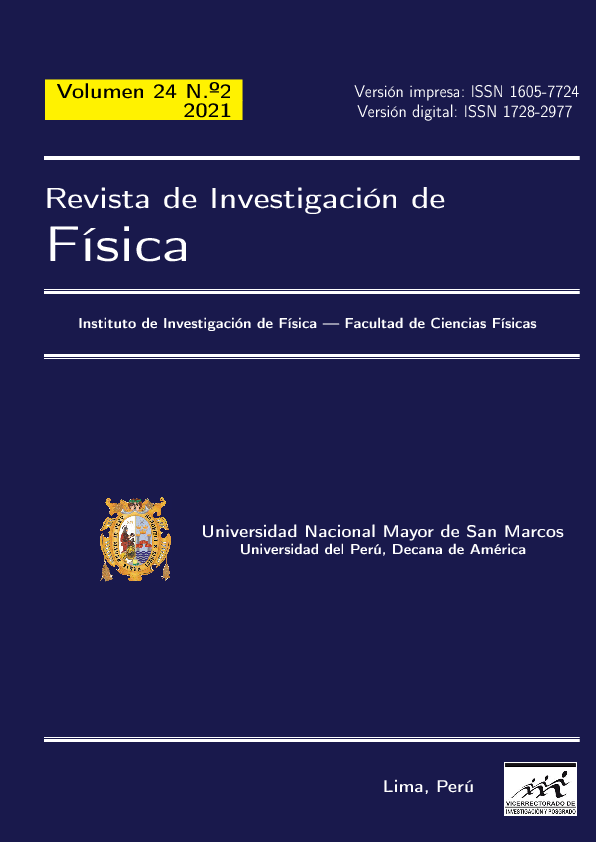Authentication of the AR-51 stony meteorite with physical techniques for characterization
DOI:
https://doi.org/10.15381/rif.v24i2.20320Keywords:
Ar-51 meteorite, transmission Mössbauer spectroscopy, X-ray difractometry, X-ray fluorescence, albite, pyroxene, magnetite, maghemiteAbstract
There is evidence for the authentication of the meteoritic sample Ar-51 as a stone meteorite, found in the Arequipa Region, Peru. The analytical techniques used for this study were X-ray fluorescence (XRF), X-ray diractometry (XRD) and room temperature (RT) transmission Mössbauer spectroscopy (TMS), The results pertaining the structural phases found by XRD include mainly albite, pyroxene, clinopyroxene, augite, maghemite and magnetite. TMS reveals that its mineralogical composition includes three magnetic sextets and two paramagnetic doublets. Two of the sextets are assigned to cation sites in magnetite: the sextet with the higher hyperne magnetic eld is assigned to an Fe3+ cation A site (tetrahedral position) and the second one is assigned to the B site, which is occupied evenly by Fe3+ and Fe2+ cations (octahedral position); and the third magnetic sextet is assigned to maghemite. The presence of both sites (octahedral and tetrahedral layers) along the (111) direction induces plane superposition which is considered more stable. Two of the paramagnetic doublets are associated with structural Fe2+ cations that could be assigned to subgroups of the pyroxene silicates, and the third doublet is associated to a Fe3+ cation site.
Downloads
Published
Issue
Section
License
Copyright (c) 2021 María Cerón, Jorge Bravo

This work is licensed under a Creative Commons Attribution-NonCommercial-ShareAlike 4.0 International License.
THE AUTHORS RETAIN THEIR RIGHTS:
a. The authors retain their trademark and patent rights, as well as any process or procedure described in the article.
b. The authors retain the right to share, copy, distribute, perform and publicly communicate the article published in the Revista de Investigación de Física (for example, place it in an institutional repository or publish it in a book), with an acknowledgment of its initial publication in the Revista de Investigación de Física.
c. The authors retain the right to make a subsequent publication of their work, to use the article or any part of it (for example: a compilation of their works, notes for conferences, thesis, or for a book), provided that they indicate the source. of publication (authors of the work, journal, volume, number and date).






